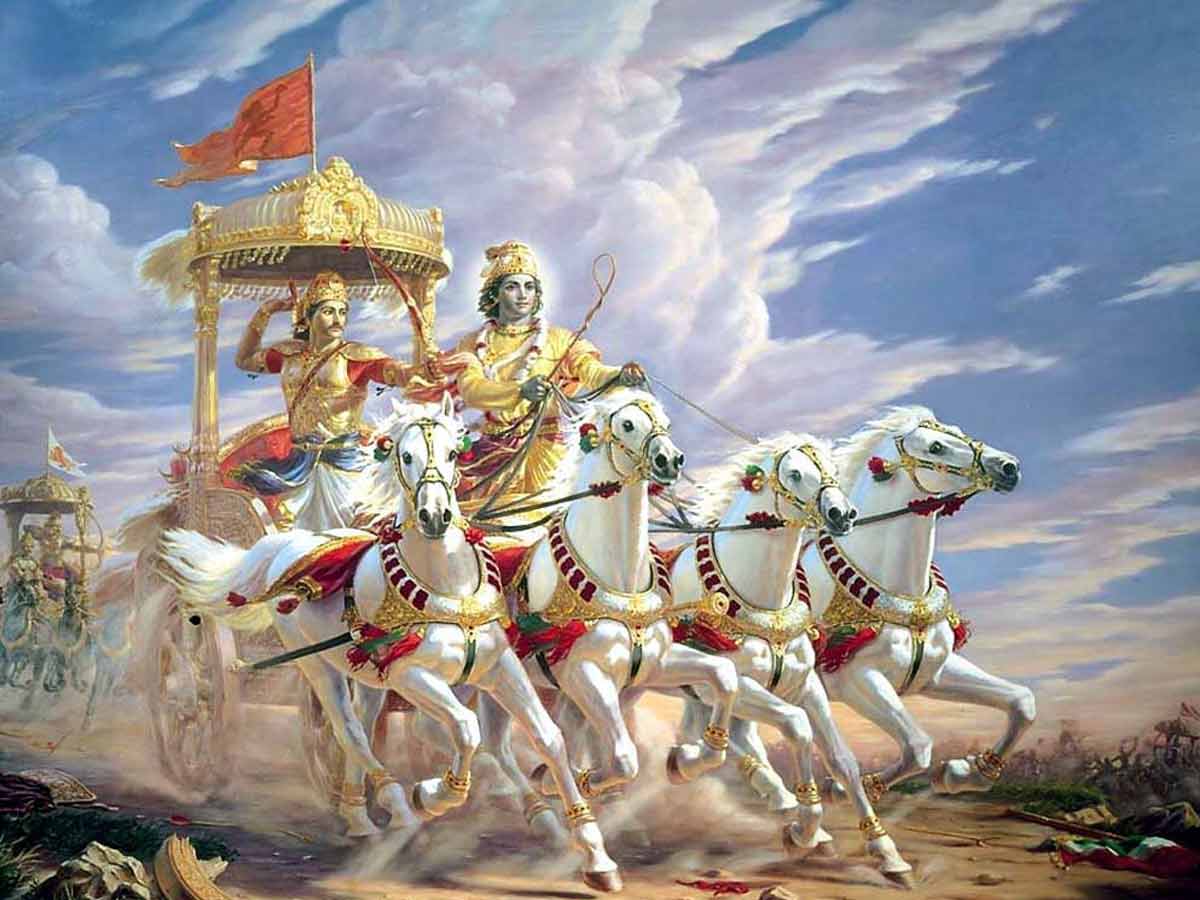
Mahabharat
Mahabharata of Sage Veda Vyaasa was a monumental work written in about one lakh verses. The name Mahaabhaarata is etymologically explained as “Mahatvaat Bhaaravatvaat Cha Mahaabhaaratam Uchyate” i.e. due to the bulk of the text (Bharara) and also owing to the greatness of the subject matter (Mahat) the text is named Mahabharata.
Though the entire Mahaabhaarata cannot be said to follow uniformly a single storyline, the continuous storyline is that of the Pandava and Kaurava princes, their wonders, exploits, deceits, sufferings, envy, triumph, etc. But the lifeline of Mahaabhaarata is the character of Krishna, the incarnation of Vishnu and the real hero of Mahabharata is Karna.
It is a story of the conflict between Kauravas led by Duryodhana and their cousins Pandavas, the virtuous. Intricately woven with suspense, greed, avarice, deceit, state-craft, and ruthlessness, all part of politics of power, Mahaabhaarata is a book with a lot of dramatic action. The final dramatic culmination is in the Great War, resulting in the annihilation of a large chunk of the human population.
But within this labyrinth of episodes, Vyaasa emphatically sets forth the greatness of morals, righteous living, devotion, penance, pilgrimages, nuances of dharmic life which can be imbibed by following the Wise and Learned. Spread in eighteen chapters called Parvas, Mahaabhaarata accords a special place to the number ‘Eighteen’. For, the older name by which Mahaabhaarata was known was ‘Jaya’, which when represented numerically (using traditional Kataapayaadi system of coding) gives the number eighteen. The number of Parvas is eighteen.
The extent of army participating in the battle is eighteen aksauhini (battalions i.e. eleven on Kaurava side and seven on Paandava), the number of days the battle raged was eighteen, and the most important message that flowed out of this pelmel i.e. Bhagavad Geeta was a revealed to this world in eighteen chapters.
